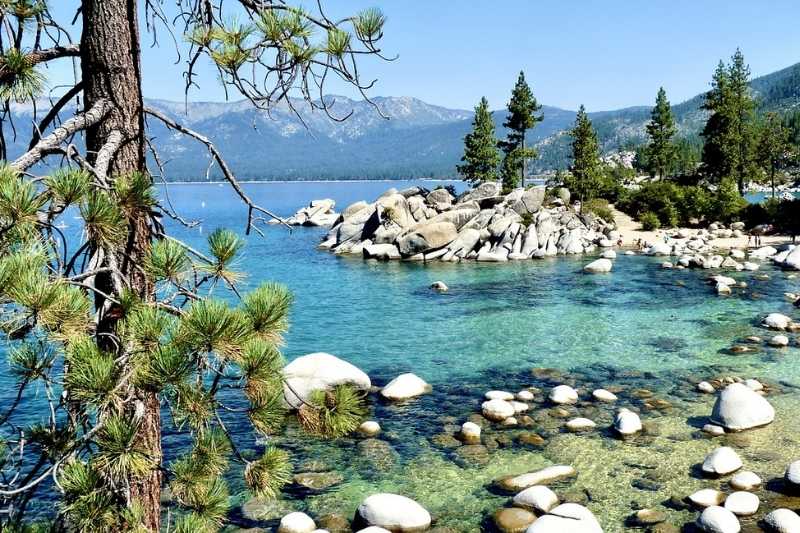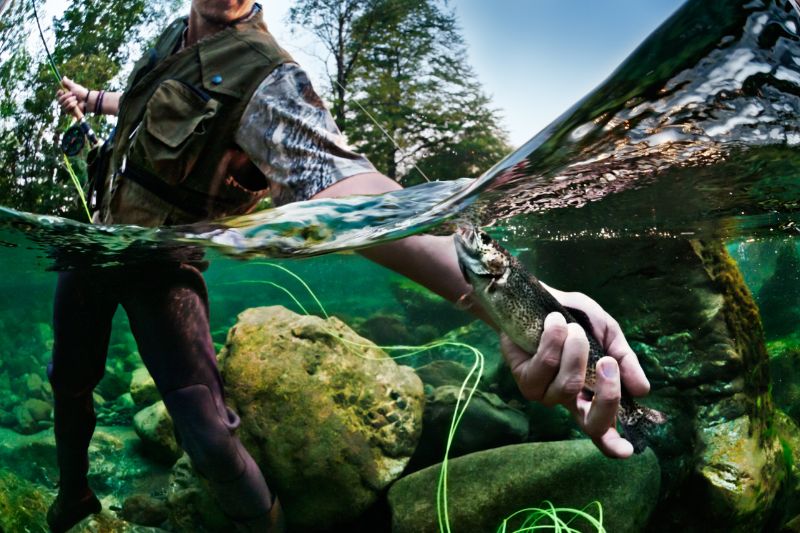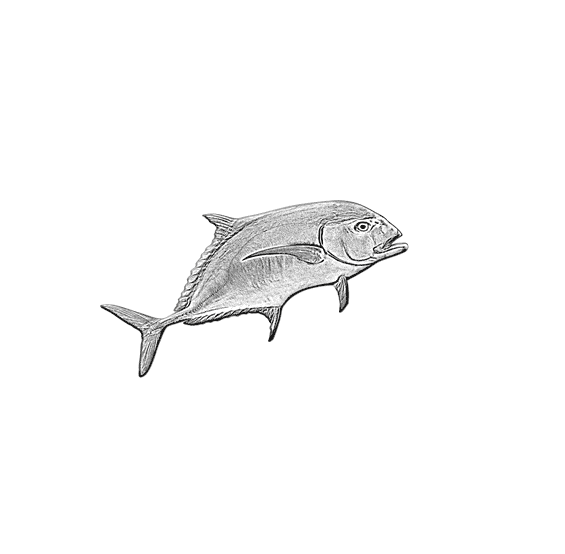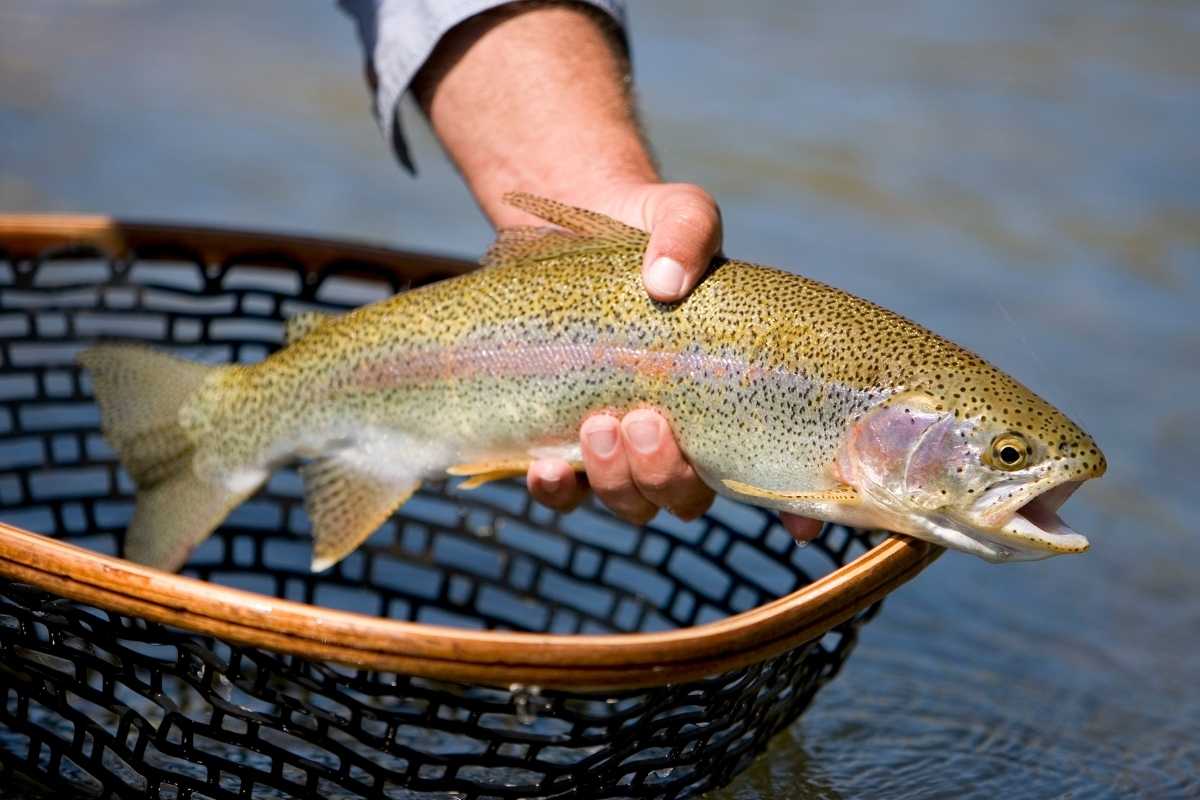Where are all of the fish at? How deep do trout swim? It is an age old questions. When fishing for trout, you may find yourself asking the same question if you are not having any luck.
Like anything, it takes time and experience to nail down where to find trout, and more importantly, what the best tactics are to catch them. This post will look at water depth and what to consider the next time to hit the lake, river, or stream in search of trout!
So, Do Trout Like Deep or Shallow Water?
Trout are a cold water fish, so they generally like to be where the water is colder. This means that they will hang out in deeper water.
The exception is in colder climates, like winter ice fishing, they will hover in shallower water while in the dead summer, will go much deeper to find a cold spot. The factors you will want to look for when finding the depth where the trout are:
- How big and deep the body of water is.
- What time of year it is.
- If it is a lake or a moving body of water like a stream or river.
- How fast the lake gets deeper (is it a gradual slope, or a drop off).
- What time of day it is.
Do Different Times Of Year Matter?
Since trout are cold water fish, the time of year you fish for them is definitely going to matter when it comes to depth. If you are ice fishing in the middle of December, then you are probably going to only have to fish in 4 to 8 feet of water.
If you are fishing a smaller lake in the middle of July or August, you are going to have to cast quite a bit further to get to deeper water.
You can always ask your local bait shop how deep the lake is, or even go on google before you go fishing to make sure you have the right gear for the lake. There is nothing worse than getting skunked because you are fishing too deep or too shallow for trout.
Time of Year and Depth When Lake Fishing
There are a few different “perfect” depths for catching a ton of trout. Also keep in mind that the time of year and day all play a part, but on an average day you can expect to find fish at the following depths when fishing lakes or deep bodies of water:

- Fall and Spring: 20 to 35 feet deep
- Winter: 4 to 8 feet deep, possible a little deeper on small lakes
- Summer: 35 to 40 feet deep
Different fish love different types of water to swim in, so when you are fishing with bass, you will look for structures or weeds where they can hide and strike out at bait. For trout, they will like drop offs and sunken reefs to swim around in.
How Are Depths Different From Lakes, Streams, and Rivers?
The one thing you have to remember about streams and rivers are that they are normally going to be colder than a stale lake, so trout can be in much shallower water and still be fine.
Streams and rivers generally come from snow run off or mountain springs, so depending on the current of the water, trout can actually be seen and caught in just under a foot of water depth.
In a smaller body of water or lake, trout will hangout at different depths because there is less movement, so when the sun is beating down on a lake, they will dive deeper to stay colder.
Some big lakes like Lake Tahoe in California is already cold because it is at a higher elevation, so the fish will be at a shallower depth. This is where knowing the lake or river you are going to fish at is crucial to landing trout.
Do You Have To Fish At Different Depths With Different Baits?
For the most part, you can fish at whatever depth you want with any bait. There are exceptions to this rule though when fishing with things like lures and fly fishing. Flies generally have to stay on top of the water, because there are not that many bugs that swim around, but it can be done.
The same goes for lures in that you do not really bottom fish with them because they have to keep them moving through the water to be effective.
You can fish any depth with things like worms, salmon eggs, other natural baits, and Powerbait, so if you like to use any baits like that, you can suspend them from different depths, or use them for bottom fishing.
Should I Fish Off The Bottom?
When fishing lakes, it is best to suspend the bait somehow for trout. It is best to fish just a few inches off the bottom, and not let it just rest on the ground.
This will give the fish a better chance of seeing and wanting to strike your bait. For shallower depths, you can use a bobber to suspend your bait a few feet under the surface where the trout will be cruising and easily see and strike your bait.

Most baits like Powerbait will float, but if you like to use natural worms, you can get a “worm blower” that will blow air into your worm causing it to be more buoyant underwater and it will float. Be careful of baits like salmon eggs because they tend to sink.
Does Powerbait Really Work?
Powerbait is one of the best man-made baits to use for trout and other fish. Powerbait is a man-made fishing bait that is scented to attract fish to bit it, and is very good because it also floats, so you can easily fish it several inches off the bottom of the lake, or you can let it float downstream to attract stream and river fish.
It also has a very vibrant color to it, so fish can see it clearly from a distance. A lot of anglers use this bait, especially for trout fishing. We have an entire article on Powerbait found by clicking here.
Are Bobbers Good to Use When Fishing Streams And Rivers?
Fishing bobbers are great for fishing streams and rivers because it allows you to keep an eye on where your line is going.
Since rivers and streams can move your bait around a lot because of the currents, keeping a bobber 2 to 3 feet up your line gives you much more visibility on where your bait is, at all times. This will help you identify if your line got tangled up on the bank downstream.
Is There A Best Bait For Creeks And Streams For Trout?
There are three baits that are the best for fishing streams and creeks for trout, they are:
- Salmon Eggs
- Powerbait
- Flies
Flies will always work great for creeks and streams, and can be fished from a spinning rod and do not always require a fly rod. Powerbait and salmon eggs are great for letting your bait float down the river, or bounce off the bottom, and attract big trout.
Final Thoughts
When it comes to fishing for trout, water temperature and depth play a key role into more catching than just fishing. Trout like cold water, and you really need to know where you are fishing to accurately gauge where trout want to be.
Time of year also plays a big part, so if you are fishing in the dead of summer and only casting out into 15 feet or less water depth, you are probably going to catch very little, so make sure you know the lake and the water temperature before you go. Lot’s of lakes provide this information on their websites!

